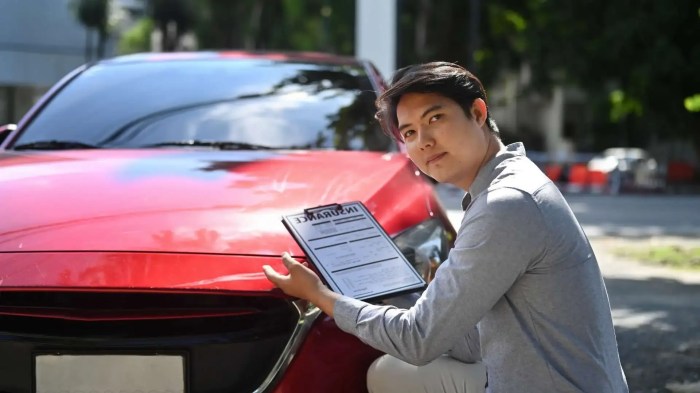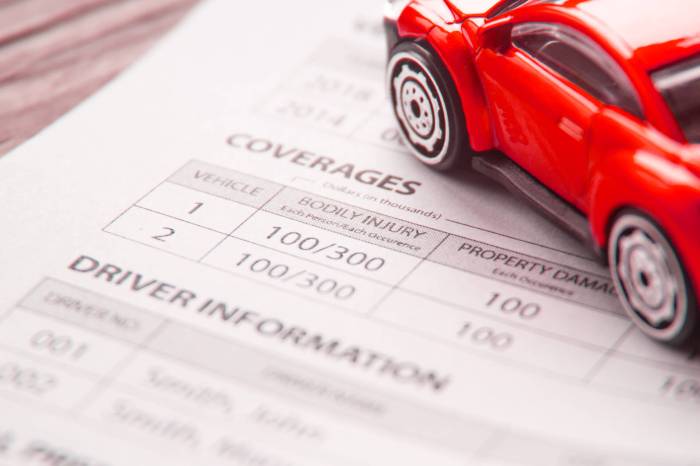Best car insurance for drivers in urban areas is a crucial consideration, given the unique challenges and higher risks associated with city driving. From navigating congested streets and increased traffic incidents to the heightened risk of theft and vandalism, urban drivers face a different insurance landscape than their suburban or rural counterparts. This guide delves into the factors that influence urban car insurance costs, explores various coverage options tailored to city life, and provides strategies for finding the best and most affordable insurance provider to meet your specific needs.
Understanding the nuances of urban driving and how they impact insurance premiums is key to securing adequate protection without overpaying. We will examine the impact of population density, traffic patterns, and common urban risks like parking damage and theft, helping you make informed decisions about your coverage. We’ll also compare different insurance providers, highlighting their strengths and weaknesses, and provide tips for negotiating lower premiums.
Factors Influencing Urban Car Insurance Costs
Urban car insurance premiums are significantly influenced by a variety of factors, primarily stemming from the increased risks associated with densely populated areas. Higher population density translates to more vehicles on the road, leading to a greater likelihood of accidents and claims.
Population Density and Insurance Premiums
The higher the population density, the greater the number of vehicles on the road, increasing the probability of accidents. Insurance companies consider this increased risk when calculating premiums, resulting in higher costs for drivers in densely populated urban areas compared to those in rural areas. For example, a megacity like New York City will generally have higher premiums than a smaller city like Syracuse, New York.
Traffic Congestion and Accident Rates
Traffic congestion is a major contributing factor to higher accident rates in urban areas. Increased stop-and-go traffic, lane changes, and close proximity between vehicles create more opportunities for collisions. This elevated accident risk directly impacts insurance costs, as insurers factor in the higher frequency of claims in congested areas.
Comparative Insurance Costs Across Urban Areas
Data from various insurance comparison websites show significant variations in average insurance premiums across different urban areas. For instance, major metropolitan areas like Los Angeles, Chicago, and New York consistently report higher average premiums than smaller cities or suburban areas. These differences reflect the varying levels of risk associated with each location, considering factors such as traffic density, crime rates, and the frequency of weather-related incidents.
Urban-Specific Risks and Their Impact
Urban environments present unique risks that significantly impact insurance premiums. These include a higher incidence of vehicle theft, vandalism, and damage resulting from collisions in crowded parking lots or tight city streets. The increased likelihood of these events necessitates higher premiums to offset the potential for claims.
Comparison of Insurance Costs Across City Sizes
| City Size | Average Premium | Common Risks | Risk Mitigation Strategies |
|---|---|---|---|
| Small City (Population < 100,000) | $800 – $1200 per year | Minor accidents, occasional theft | Safe driving, secure parking |
| Large City (Population 100,000 – 1,000,000) | $1200 – $1800 per year | Increased accidents, theft, vandalism | Comprehensive coverage, anti-theft devices, secure parking |
| Megacity (Population > 1,000,000) | $1800+ per year | High accident rates, frequent theft, vandalism, parking damage | Comprehensive coverage, advanced safety features, garaged parking |
Types of Car Insurance Coverage for Urban Drivers: Best Car Insurance For Drivers In Urban Areas
Choosing the right car insurance coverage is crucial for urban drivers, given the heightened risks they face. Understanding the different types of coverage and their benefits is essential to making an informed decision.
Liability, Collision, and Comprehensive Coverage
Liability coverage protects you financially if you cause an accident resulting in injuries or property damage to others. Collision coverage covers damage to your vehicle in an accident, regardless of fault. Comprehensive coverage protects against damage caused by non-collision events such as theft, vandalism, or weather-related incidents. In urban areas, comprehensive coverage is often recommended due to the increased risk of theft and vandalism.
Uninsured/Underinsured Motorist Coverage
Uninsured/underinsured motorist coverage is particularly important in urban areas, where the likelihood of encountering uninsured or underinsured drivers is higher. This coverage protects you and your passengers if you are involved in an accident caused by a driver without adequate insurance.
Rental Car Reimbursement Coverage
Rental car reimbursement coverage can be beneficial for urban dwellers, as it helps cover the cost of a rental car while your vehicle is being repaired after an accident or due to other covered incidents. This is especially helpful in cities where public transportation may not be readily available.
Additional Coverage Options
Roadside assistance can provide peace of mind in case of breakdowns or other roadside emergencies, common occurrences in congested urban environments. Gap insurance can cover the difference between the actual cash value of your vehicle and the amount you owe on your loan if your car is totaled.
Key Features and Benefits of Major Coverage Types
- Liability: Protects others involved in accidents you cause.
- Collision: Covers damage to your vehicle in an accident, regardless of fault.
- Comprehensive: Covers damage from non-collision events (theft, vandalism, weather).
- Uninsured/Underinsured Motorist: Protects you if hit by an uninsured driver.
- Rental Car Reimbursement: Covers rental car costs while your vehicle is repaired.
Finding the Best Insurance Provider for Urban Drivers
Selecting the right insurance provider is crucial for securing the best coverage at a competitive price. Urban drivers should carefully compare different providers, considering their offerings and customer service.
Comparison of Insurance Company Services
Major insurance companies often tailor their services to urban areas, offering specialized coverage options and discounts. However, it’s important to compare offerings across different providers to find the best fit for your needs and budget. Some insurers may offer better rates for specific urban locations or demographic groups.
Online Insurance Comparison Tools
Online comparison tools can be beneficial for quickly comparing quotes from multiple insurers. However, it’s important to understand the limitations of these tools and to verify the information provided with the individual insurers.
Discounts for Urban Drivers
Many insurers offer discounts to urban drivers for safe driving records, bundling home and auto insurance, and enrolling in telematics programs that track driving behavior.
Negotiating Lower Premiums
Drivers can negotiate lower premiums by demonstrating a clean driving record, opting for higher deductibles, and bundling insurance policies. Shopping around and comparing quotes from multiple insurers is crucial for securing the best possible rate.
Comparison of Insurance Providers
| Provider Name | Average Premium | Coverage Highlights | Customer Reviews Summary |
|---|---|---|---|
| Provider A | $1500 | Strong liability coverage, good customer service | Mostly positive reviews, some complaints about claims processing |
| Provider B | $1650 | Comprehensive coverage options, discounts for safe drivers | High customer satisfaction ratings, excellent claims handling |
| Provider C | $1400 | Competitive pricing, limited coverage options | Mixed reviews, some concerns about customer service responsiveness |
Driving Habits and Insurance Costs in Urban Areas
Driving habits significantly influence insurance premiums in urban settings. Safe driving practices and smart parking choices can lead to lower costs.
Driving History and Insurance Premiums, Best car insurance for drivers in urban areas

Accidents and traffic violations significantly impact insurance premiums. A clean driving record generally results in lower premiums, while accidents and tickets lead to higher costs. The impact is often more pronounced in urban areas due to the higher frequency of accidents.
Parking Habits and Insurance Costs
Parking habits can affect insurance costs. Street parking, especially in high-crime areas, increases the risk of theft and vandalism, leading to higher premiums. Garaged parking offers greater protection and may result in lower premiums.
Commute Patterns and Insurance Risk
Commute patterns, particularly during rush hour, increase the risk of accidents and contribute to higher insurance premiums. Driving during off-peak hours can potentially lower your risk profile.
Driving Behaviors and Insurance Premiums

Aggressive driving behaviors, such as speeding and reckless driving, increase the likelihood of accidents and result in higher insurance premiums. Defensive driving techniques and adherence to traffic laws are crucial for maintaining a low-risk profile.
Safe Driving Practices for Lower Insurance Costs
- Maintain a clean driving record.
- Avoid aggressive driving behaviors.
- Park in secure locations.
- Utilize advanced driver-assistance systems.
- Regularly maintain your vehicle.
Illustrative Examples of Urban Driving Scenarios and Insurance Implications
Let’s examine some common urban driving scenarios and their insurance implications.
Fender Bender in a Busy Intersection
Scenario: Two vehicles collide at a busy intersection during rush hour. One driver runs a red light, causing the accident. Insurance Implications: The at-fault driver’s liability coverage will pay for the damages to the other vehicle and any injuries sustained. Both drivers’ collision coverage may cover repairs to their own vehicles, depending on their policy deductibles.
Car Theft in a High-Crime Area

Scenario: A car is stolen from a street parking spot in a high-crime neighborhood. Insurance Implications: Comprehensive coverage will typically cover the cost of replacing the stolen vehicle, minus the deductible. The claim may also cover any personal belongings that were in the vehicle.
Damage to a Parked Car
Scenario: A parked car is hit by another vehicle in a crowded city street. The driver who hit the parked car leaves the scene. Insurance Implications: Comprehensive coverage will typically cover the damage to the parked car, minus the deductible. Uninsured/underinsured motorist coverage may be necessary if the at-fault driver cannot be identified or is uninsured.
FAQ Guide
What is uninsured/underinsured motorist coverage and why is it important in urban areas?
Uninsured/underinsured motorist coverage protects you in case you’re involved in an accident with a driver who lacks sufficient insurance or is uninsured. Urban areas often have higher rates of uninsured drivers, making this coverage especially crucial.
How does my credit score affect my car insurance premiums?
In many states, your credit score is a factor in determining your insurance premiums. A higher credit score generally translates to lower premiums.
Can I bundle my car and home insurance for a discount?
Yes, many insurance companies offer discounts for bundling your car and home insurance policies. This can lead to significant savings.
What is gap insurance and should I consider it?
Gap insurance covers the difference between the actual cash value of your car and the amount you still owe on your loan if your car is totaled. It’s beneficial if you have a new car and a significant loan balance.